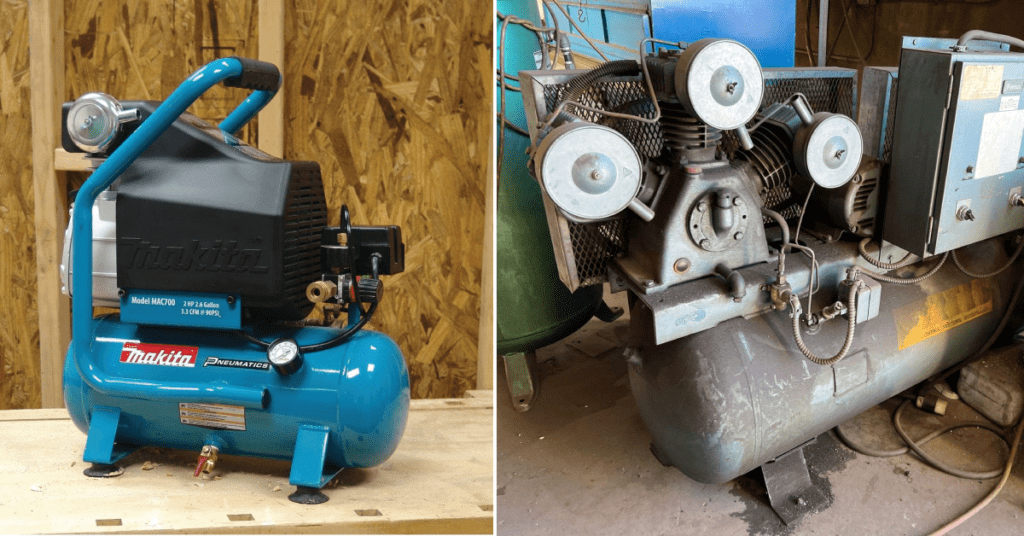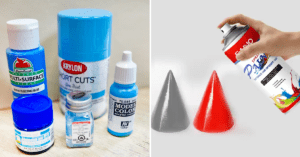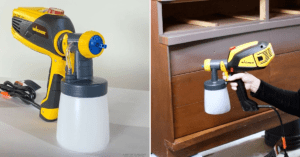How to Clean Air Compressor
Air compressors are the unsung heroes of the DIY world. From inflating tires to powering pneumatic tools, they’re workhorses that often ensure projects get off the ground – quite literally. But like any trusty tool, air compressors need some TLC too. Unfortunately, the cleaning process is often overlooked, leading to decreased efficiency, potential safety hazards, and even costly repairs. In this comprehensive guide, we’ll walk you through how to clean air compressor and and maintaining it, ensuring it stays in peak condition for years to come.

Why Cleaning Your Air Compressor Matters
Before you roll up your sleeves, it’s crucial to understand why cleaning your air compressor is more than just a housekeeping chore. Neglecting maintenance can lead to a buildup of debris and contaminants, which over time can:
- Reduce the overall lifespan of the compressor
- Decrease its efficiency and lead to higher energy costs
- Compromise the quality of air output, impacting the function of pneumatic tools
- Create potential safety risks, such as overheating and electrical hazards
It’s clear that a clean compressor is a safe and efficient one. With this in mind, let’s ensure you’re well-equipped to tackle this important task.
Safety Precautions Before Cleaning
Cleaning an air compressor isn’t without its risks. The unit may house high-pressure air and may also be powered electrically. Therefore, before you begin any cleaning or maintenance tasks, make sure to:
- Turn off and unplug the air compressor
- Allow the compressor to cool down
- Release all air pressure from the tank by opening the drain valve
- Wear protective gear, including gloves and eye protection
By following these precautions, you significantly decrease the risk of injury and create a safer working environment.
Essential Tools for Cleaning
To clean your air compressor effectively, you’ll need a few essential tools. These include:
- a set of screwdrivers, both flathead and Phillips,
- a wrench or socket set,
- a pipe brush for cleaning the intercooler tubes,
- a portable vacuum or air blower for removing dust and debris, and
- a wire brush for especially stubborn areas of corrosion.
Gathering these tools will ensure you can address any type of cleaning your air compressor may require.
Pre-Cleaning Checks
Before you start cleaning, it’s wise to perform a few checks to assess the state of your compressor. Look for:
- Dust or dirt accumulation on the exterior
- Excess moisture or oil around the base, indicating leaks
- Rust or corrosion on metal components
By conducting these checks, you can identify problem areas that may require more attention during cleaning.
Cleaning the Exterior
Begin by wiping down the exterior of the compressor with a damp cloth. This will remove surface dust and dirt, preventing it from being drawn into the compressor’s system.
For more stubborn grime, especially around the air intake, use a mild household cleaner and a sponge. Be careful not to direct any moisture into the intake, as this can damage the compressor.
Pay special attention to the ventilation fins, ensuring they’re clear of any obstruction. This allows the unit to dissipate heat effectively, preventing overheating and maintaining efficient operation.
Cleaning the Air Filters
The air filter in your compressor prevents dust and debris from entering the system. Over time, it can become clogged, hindering airflow. To clean the air filter:
- Remove the filter cover and the filter itself
- Inspect the filter for tears or excessive dirt
- If it’s a non-reusable filter, replace it with a new one
- If it’s a washable filter, gently rinse it under lukewarm water, allow it to dry completely, and then reinstall it
Remember, a clean filter is vital for the air quality and performance of your compressor.
Draining Moisture from the Tank
Moisture can accumulate in the compressor tank, leading to rust and a decrease in air quality. To drain the moisture:
- Ensure the compressor is unpowered and with no pressure in the tank
- Open the tank drain valve to release the moisture
- If it’s been a while since the last servicing, consider using an air line desiccant filter to absorb excess moisture
By addressing moisture, you’re prolonging the life of your tank and protecting the durability of your compressor.
Cleaning Internal Components
Cleaning the internals requires a more in-depth approach. You may need to:
- Remove the compressor pump cover to access the cylinder head
- Inspect the valves, clean them with a soft brush, and check for proper movement
- use a pipe brush to clean the intercooler tubes if your compressor has a two-stage process
Proceed with caution and refer to your compressor’s manual for specific instructions on component access and cleaning.
Lubricating the Air Compressor
Lubrication is vital for an air compressor’s moving parts. Here’s how to ensure your compressor stays well-lubricated:
- Regularly check the oil level in the crankcase (for oil-lubricated compressors)
- If the oil is dirty or the level is low, change it as per the manufacturer’s recommendations
- Use the correct oil type and viscosity
Proper lubrication reduces friction, which can otherwise lead to overheating and accelerated wear of internal parts.
Checking the Belts and Pulleys
For belt-driven compressors, the belts and pulleys are critical for transferring power efficiently. Here’s how to maintain them:
- Ensure the belts are tight and free from cracks or excessive wear
- Adjust the belt tension as needed
Use the manufacturer’s guidelines to check alignment and make any necessary adjustments to the pulleys.
Examining the Electrical Components
An air compressor’s electrical system needs to be free from corrosion and damage. Always:
- Inspect the power cord and plug for fraying or exposed wires
- Check the on/off switch and wiring for any signs of overheating
- Look for any loose connections and tighten or replace as necessary
A well-maintained electrical system is crucial for the safety and operation of your compressor.
Calibrating Pressure Gauges
Accurate pressure readings are essential for safe and effective operation. To calibrate the gauges:
- Use a pressure gauge that’s properly calibrated to ensure the compressor’s reading is accurate
- If the gauge is off, adjust it by following the manufacturer’s instructions and using the appropriate tools
Regular calibration ensures you’re working with accurate pressure settings, vital to both safety and precision in your projects.
Final System Inspection
Once everything has been cleaned and maintained, give your air compressor a final once-over. This should include:
- Checking for leaks by applying a soapy water solution to all connections and observing for bubbles
- Listening for any unusual sounds that could indicate a problem with the motor or other components
- Confirming that all fasteners and fittings are secure and in place
Taking the time for this thorough inspection can help you catch minor issues before they become major headaches.
Routine Maintenance Tips
Don’t wait for your compressor to show signs of wear; incorporate the following routine maintenance practices to ensure its longevity:
- Regularly check and clean the Air Intake
- Inspect the V-Belts for tension and wear
- Verify the condition of the fittings and hoses
- Check the safety release valve for proper operation
By maintaining a regular maintenance routine, you’ll prevent many common issues and keep your compressor running smoothly.
Troubleshooting Common Issues
Knowing how to recognize and address common problems can save you time and money. Familiarize yourself with common compressor issues such as:
- Air leaks
- Failing pressure switches
- Motor overheating
Being able to identify and address these issues promptly can mean the difference between a quick fix and a costly repair.
Upgrading and Replacing Parts
As your compressor ages, some parts may need upgrading or replacement. Consider:
- Upgrading to a higher-quality air filter for improved performance
- Replacing corroded or damaged fittings and connections
- Investing in a new pressure regulator for better precision
Upgrades can not only extend the life of your compressor but also enhance its capabilities and performance.
Storing Your Air Compressor
Proper storage is essential if you plan to leave your compressor idle for extended periods:
- Store in a clean, dry environment to prevent corrosion
- Drain all moisture from the tank
- Apply a light coat of oil on exposed metal surfaces to prevent rust
- Cover the compressor with a protective tarp or sheet
Storing your compressor correctly will ensure it’s ready to go when you need it, without any unpleasant surprises.
Common Mistakes to Avoid
In the course of cleaning your air compressor, here are some common mistakes you’ll want to steer clear of:
- Using excessive force when removing plugs and fittings, which can lead to damage
- Neglecting the safety checks and warnings detailed in the manufacturer’s manual
- Disregarding the order of the disassembly, which can cause confusion during reassembly
Awareness of these common pitfalls will help you conduct this maintenance task with precision and safety.
FAQs About Cleaning Air Compressor
How often should I clean my air compressor?
Air compressors used in clean environments might need quarterly cleaning, while those used in dirty conditions may require monthly cleaning.
What’s the best way to clean my air compressor if I’ve neglected it for a long time?
Start by releasing the tank pressure, then follow the steps for a deep clean as outlined in this guide, paying extra attention to moisture and debris buildup.
Why is it important to drain the tank after each use?
Draining the tank prevents moisture buildup, which can lead to rust and compromised air quality.
Can I use a pressure washer to clean my air compressor?
No, using a pressure washer can force water into the compressor’s system, leading to damage. Stick to using a damp cloth and mild detergent for the exterior.
Conclusion
Your air compressor is an investment that serves you in countless ways. By taking the time to clean and maintain it properly, you’re not only prolonging its life but also ensuring it operates safely and efficiently. Remember, preventive maintenance is always the best approach, and with the knowledge you’ve gained from this guide, you’re well on your way to becoming an expert in air compressor care. Happy cleaning, and here’s to many more years of reliable compressed air at your fingertips!






